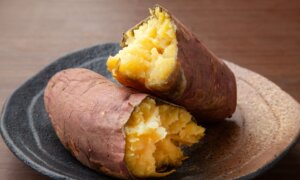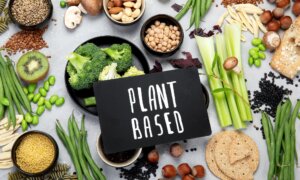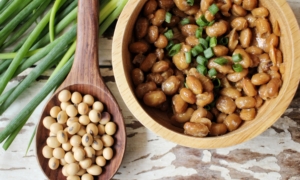Leg cramps are a common issue and can be excruciating when they occur. What follows are some simple and practical first-aid methods for cramps, as well as effective ways to treat and prevent them, such as massage and diet therapy.
A cramp refers to the involuntary contraction of muscles, typically lasting from a few seconds to several minutes and causing severe pain. After the cramp subsides, the affected area may remain sore for several hours or even days. Approximately 60 percent of adults experience cramps from time to time, with the frequency increasing with age. Notably, women are more likely to experience nighttime cramps than men.
Here are some immediate steps to take when a cramp occurs:
- Stop activity: Immediately cease any activity you were engaged in before the cramp, as it is likely the cause of the cramp.
- Stretch and massage: Gently stretch and massage the cramped muscle to relieve pain. For calf cramps, straighten your leg and use your hand to pull your toes toward your body, holding this position until the cramp eases. For toe cramps, gently pull and massage the affected toes with your fingers.
- Apply heat or cold: Applying heat with a warm towel or heating pad can quickly alleviate cramps. For cramps accompanied by muscle injury or inflammation, using an ice pack or cold compress may be more effective.
Ways to Prevent Leg Cramps in Daily Life
- Stay hydrated: Drink plenty of water, especially electrolyte-rich fluids. This is particularly important after heavy sweating from exercise, as it helps restore fluid balance and reduce the likelihood of cramps.
- Replenish electrolytes: Ensure adequate intake of calcium, potassium, and magnesium, as these electrolytes are crucial for normal muscle function. Specifically, researchers from Japan and Australia showed that fluid with electrolytes decreased the sensitivity of muscles to cramps.
- Avoid sudden movements: When standing or walking, avoid abrupt changes in position to prevent cramps.
- Keep legs and feet warm: Maintain warmth in your legs and feet, especially in cold environments, to prevent cramps triggered by the cold.
- Engage in regular exercise: Regular exercise helps build leg muscle strength and endurance, which can help lower the risk of cramps.
- Maintain a balanced diet: Incorporate foods rich in calcium, magnesium, and potassium into your diet, such as dairy products, legumes, bananas, and leafy green vegetables, to help prevent cramps.
Traditional Chinese Medicine Remedies for Cramps
In Traditional Chinese Medicine (TCM), acupuncture, moxibustion, and tuina (a type of therapeutic massage) are commonly used to alleviate cramps.
Tuina is the most effective method for relieving leg cramps, and the primary techniques for relaxing the muscles include:
- Kneading: Use your palms or fingers to gently knead the affected area with moderate pressure, avoiding excessive pain.
- Pinching: Pinch and knead the muscle using your thumb and fingers.
- Pushing: Use the base of your palm to apply pressure along the direction of the meridians, which helps to promote blood circulation.
According to TCM, meridians are the channels through which energy flows in the human body. The internal organs are connected to the body’s surface through these meridians. Along the meridians are specific points known as acupoints, which possess unique functions. By stimulating the corresponding acupoints through techniques like acupuncture and massage, it is possible to treat diseases related to specific organs. It is important to note that acupuncture should always be performed by a qualified acupuncturist or TCM practitioner.
Moxibustion involves using heat generated from mugwort to stimulate acupuncture points, which can improve local blood circulation and thus alleviate cramps.
Both acupuncture and moxibustion can be applied directly to the area affected by cramps. Additionally, massaging the Zusanli, Chengshan, Yanglingquan, and Taixi acupoints can effectively relieve cramps.

The location of Zusanli acupoint. (The Epoch Times)

The location of Chengshan acupoint. (The Epoch Times)

The location of Yanglingquan acupoint. (The Epoch Times)

The location of Taixi acupoint. (The Epoch Times)
Herbal Formula
Shakuyaku-kanzo-to (Shao-Yao-Gan-Cao-Tang), commonly known as Peony and Licorice Decoction, can treat cramps and is effective for muscle spasms, as well as spasmodic pain in the smooth muscles of the gastrointestinal tract and skeletal muscles.
A clinical trial found that Shakuyaku-kanzo-to effectively alleviated painful muscle spasms caused by lumbar spinal stenosis. Spinal stenosis causes narrowing of the spine and puts pressure on the spinal cord and ner resulting in pain.
Dietary Soups and Teas
TCM embraces the concept of medicine and food homology, meaning that ingredients used in cooking can also serve as medicinal herbs. These ingredients can be used in everyday life to alleviate and prevent leg cramps. Here are a few recommended soups:
Red Date Longan Soup
Ingredients:
- 0.35 ounces (10 grams) red dates
- 0.53 ounces (15 grams) longan
- 0.18 ounces (5 grams) fresh ginger
Preparation:
- Remove the flesh from the longan.
- Place the longan flesh, red dates, and fresh ginger into a pot, then add 16.91 fluid ounces (500 milliliters) of water and bring to a boil.
- Once boiling, reduce the heat and simmer for 20 minutes.
- Remove the red dates and longan flesh, then drink the soup in several portions throughout the day. The red dates and longan can also be eaten.
Effects: Nourishes the blood and calms the mind, particularly beneficial for cramps caused by blood deficiency.
Vinegar-Egg Juice
Ingredients:
- 16.91 fluid ounces (500 milliliters) vinegar
- 1 egg
Preparation:
- Clean the egg thoroughly and soak it in the vinegar overnight.
- The next morning, remove the egg, crack the shell, and mix the egg with the vinegar.
- Warm the mixture slightly before drinking it.
Effects: Promotes vascular health, boosts calcium levels, and helps relieve cramps.
Black Sesame Soup
Ingredients:
- 1.06 ounces (30 grams) black sesame seeds
- 0.35 ounces (10 grams) brown sugar
Preparation:
- Toast the black sesame seeds until they are cooked, then grind them into a powder.
- Add the brown sugar and 16.91 fluid ounces (500 milliliters) of water to the sesame powder.
- Bring the mixture to a boil, stirring until well combined.
- Once thoroughly mixed, the drink is ready to serve.
Note: This drink may not be suitable for individuals with diabetes.
Effects: Black sesame seeds help nourish the liver and kidneys, support muscle and bone health and can alleviate cramps associated with liver and kidney deficiencies.
Dried Tangerine Peel and Ginger Tea
Ingredients:
- 0.35 ounces (10 grams) dried tangerine peel
- 3 slices fresh ginger
Preparation:
- Place the dried tangerine peel and fresh ginger slices in a pot.
- Add 16.91 fluid ounces (500 milliliters) of water and bring to a boil.
- Reduce the heat and simmer for 15 minutes.
- Strain the tea and drink it in several portions throughout the day.
Effects: Both dried tangerine peel and ginger are warming ingredients that can help relieve leg cramps caused by cold and dampness.
In TCM, many illnesses are believed to be caused by external forces in the environment, including wind, cold, summer heat, dryness, dampness, and fire.
According to TCM, foods typically have either cooling or warming properties; cooling foods can lower the body’s temperature, while warming foods can add warmth. Balancing your diet with these properties can help maintain the body’s internal harmony.
All of the aforementioned methods can effectively relieve acute leg cramps and help reduce the likelihood of their recurrence.
TCM aims to address the underlying causes of cramps to help reduce their frequency. If cramps are frequent and severe, it is essential to consult a TCM practitioner for a comprehensive diagnosis and treatment or see a physician, as severe leg cramping can be a symptom of peripheral artery disease.
Some herbs mentioned in this article may be unfamiliar, but they are generally available in health food stores and Asian grocery stores. It is important to note that treatment methods may vary depending on the individual. Please consult with a healthcare professional for a specific treatment plan.

















